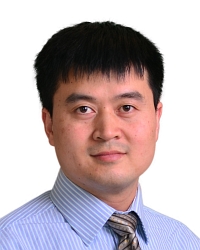TR2024-067
Harmonic Signature Extraction in Motor Fault Detection via a Weighted Sparsity-driven and Graph-based Model
-
- , "Harmonic Signature Extraction in Motor Fault Detection via a Weighted Sparsity-driven and Graph-based Model", The IFAC Safeprocess 2024 Symposium, Louise Travé-Massuyès, Eds., DOI: 10.1016/j.ifacol.2024.07.307, June 2024, pp. 734-739.BibTeX TR2024-067 PDF
- @inproceedings{Shinya2024jun,
- author = {Shinya, Tsurutashin and Liu, Dehong},
- title = {{Harmonic Signature Extraction in Motor Fault Detection via a Weighted Sparsity-driven and Graph-based Model}},
- booktitle = {The IFAC Safeprocess 2024 Symposium},
- year = 2024,
- editor = {Louise Travé-Massuyès},
- pages = {734--739},
- month = jun,
- publisher = {ELSEVIER},
- doi = {10.1016/j.ifacol.2024.07.307},
- url = {https://www.merl.com/publications/TR2024-067}
- }
- , "Harmonic Signature Extraction in Motor Fault Detection via a Weighted Sparsity-driven and Graph-based Model", The IFAC Safeprocess 2024 Symposium, Louise Travé-Massuyès, Eds., DOI: 10.1016/j.ifacol.2024.07.307, June 2024, pp. 734-739.
-
MERL Contact:
-
Research Areas:
Abstract:
Harmonics are important signatures in motor current indicating motor operating conditions and faults in motor maintenance. However, harmonics of motor faults are generally very weak and with frequency-dependent magnitudes, making it difficult to extract harmonics from noisy measurements, especially when the motor speed is varying. This paper introduces a novel weighted sparsity-driven and graph-model-based method to extract harmonics in the time-frequency domain. The method utilizes sparsity of harmonics in the frequency domain and their smoothness in the time domain due speed variation, and uses a frequency-dependent weight to leverage the magnitude of different harmonics. We formulate the harmonic signature extraction as a regularized optimization problem, and solve it us an alternating direction method of multipliers (ADMM). Results on experimental data show that the proposed method can effectively extract weak harmonic components in noisy measurements with improved performance over other existing methods.
